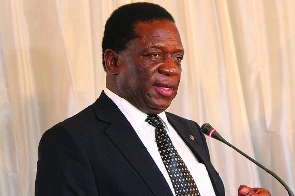If there was any iota of hope that the Monetary Policy Committee (MPC) of the central bank would again cut the policy rate to bring down lending rates of banks to help the private sector have access to affordable loans, then the double digit inflation recorded in April 2020 has made such an outcome, come Friday, very remote.
Figures released by the Ghana Statistical Service (GSS) yesterday show that inflation for April 2020 has jumped to 10.6 percent from the 7.8 percent recorded in the prior three months, making it the highest ever in the new series of data since August 2019 – indicating that, indeed, these are unusual times.
The surge in general prices of goods and services was mainly caused by price hikes in anticipation of the lockdown announcement by government on March 27, 2020.
The GSS data, which was collected during the lockdown period, show that prices in the two regions affected by the decision – Greater Accra and Greater Kumasi Metropolitan areas – recorded the highest prices in food inflation, 20.8 percent and 18.2 percent respectively, making them on average 8.8 percentage points higher than the other regions which didn’t experience any partial lockdown.
Overall, the food basket recorded inflation of 14.4 percent compared to 8.4 the previous March, whereas the non-food basket recorded 7.7 percent. This effectively takes food’s contribution to overall inflation to 59 percent, compared to the average of 44.4 percent recorded in the past months.
Since it is the central bank’s role to control inflation using monetary policy, the astronomic jump in inflation to 10.6 percent in April gives the MPC enough reason, without any argument, not to reduce the policy rate – that’s if it will not be increased.
Even before GSS released the figures, an economics professor at the University of Ghana, Prof. Peter Quartey, told the B&FT in an interview that it would be a big blow to the banking sector if the MPC further cuts the policy rate after a 150 basis points cut in March.
“I don’t expect the Bank of Ghana to further cut the policy rate now. When you reduce the rate, it affects the banks. At the moment, the banks have already had to reduce their lending rates by 2 percentage points, and that is quite significant because it will affect their profit margins.
“The banks are also going to face loan repayment risks among others. So, I think with this the banks have already given the private sector some concessions, and therefore a further cut in the policy rate would affect their capital,” he said.
He added that besides cutting their lending rates by 200 basis points, banks are arranging a GH¢3billion credit facility at reduced rates to the private sector; hence, a further cut in the policy rate in the midst of all these provisions would put excessive strain on their operations.
Again, the professor maintains that reducing the policy rate may also spark capital flight on the part of foreign investors holding foreign currency bonds, as it will no longer be attractive for them to hold such investments.
“Then, also, there are foreigners who own foreign currency-denominated bonds. In this COVID-19 era when there is a lot of uncertainty, if you continue to reduce the rate there will be capital flight because, already, the risk has gone up; and so if the returns are also going down, then any rational investor would move his or her funds out of the country – and that may have repercussions on the exchange rate,” he said.
In the last MPC meeting, the central bank announced a series of measures aimed at ensuring banks and SDIs have enough liquidity to provide financial support to critical sectors of the economy. These measures include reduction of the Primary Reserve Requirement from 10 percent to 8 percent to provide more liquidity to banks and SDIs; and reduction of the Capital Conservation Buffer (CCB) for banks from 3 percent to 1.5 percent.
It also reduced the provisions for loans in the ‘Other Loans Especially Mentioned’ (OLEM) category, from 10 percent to 5 percent for all banks and SDIs, as a policy response to loans that may experience difficulty in repayment due to the slowdown in economic activities.
Click to view details



Business News of Thursday, 14 May 2020
Source: thebftonline.com

















